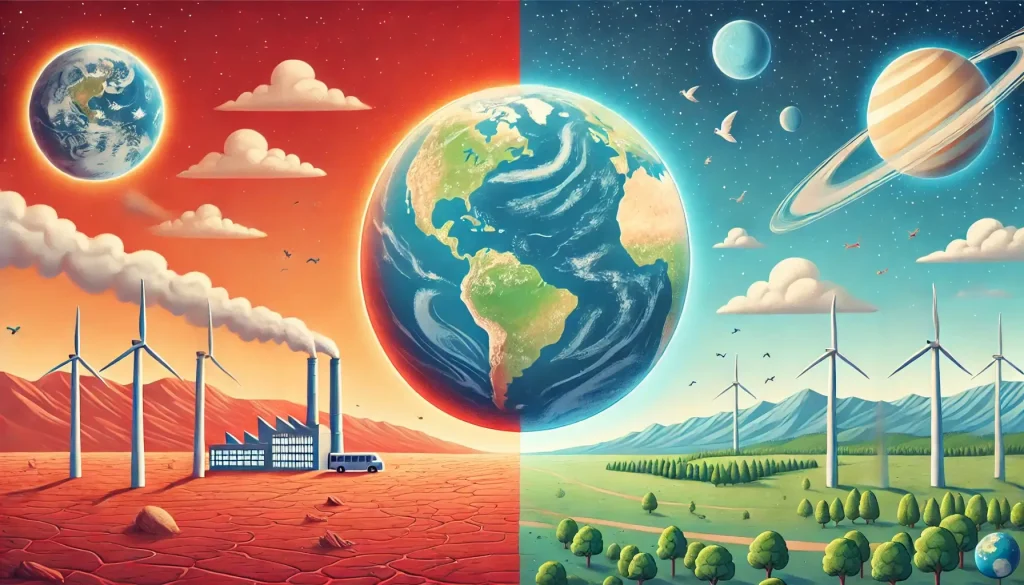Today, as we commemorate the International Day for the Preservation of the Ozone Layer, it’s essential to reflect on both the progress we’ve made and the work still left to do. The ozone layer may not grab headlines as often as other environmental issues, but its preservation is one of the most compelling success stories in the fight against climate change. Yet, this success doesn’t mean the battle is over. In fact, it highlights the need for continued global collaboration in protecting our planet.
The Ozone Layer: A Shield for Life
The ozone layer, which resides in the Earth’s stratosphere, plays a critical role in shielding all life from the sun’s harmful ultraviolet (UV) radiation. Excessive exposure to UV rays can cause skin cancer, cataracts, and damage to ecosystems—especially marine life.
In the 1980s, the world was shocked to discover that human activities—especially the use of chlorofluorocarbons (CFCs) in aerosols and refrigerants—were creating a massive hole in the ozone layer. This damage wasn’t just a distant environmental issue; it was a threat to human health and biodiversity.
But then, the world acted. In 1987, the Montreal Protocol was signed, an international treaty designed to phase out ozone-depleting substances. And the results are remarkable.
An Environmental Success Story
According to a 2022 report by the United Nations, the ozone layer is on track to recover fully by 2060. This is one of the few global environmental agreements in which all UN member states have actively participated, making the Montreal Protocol a benchmark for climate action. Since the treaty’s inception, over 99% of ozone-depleting substances have been phased out.
This isn’t just good news for the ozone layer but for climate action as a whole. Many of the substances regulated by the Montreal Protocol, such as CFCs, are also potent greenhouse gases. Their removal from the atmosphere has averted an estimated 0.5°C of global warming by 2050. This is a significant contribution to limiting the worst impacts of climate change.
The Ongoing Battle Against Climate Change
While we celebrate this victory, there’s still much to be done. The climate crisis remains a pressing concern. New threats, such as hydrofluorocarbons (HFCs)—often used as replacements for CFCs—are now recognized as highly potent greenhouse gases. Fortunately, the Kigali Amendment to the Montreal Protocol keeps us on the right path, though this doesn’t mean the work is finished.
The success of the ozone recovery should motivate us to take broader and more aggressive climate action. The same international collaboration that saved the ozone can be used to address carbon emissions, deforestation, and plastic pollution. If we can repair the ozone, surely we can turn the tide on other critical environmental challenges.
A Call to Action
What can we learn from this story of global cooperation and scientific triumph? Here are two key lessons:
- Change is possible—if we act decisively.
- Environmental recovery takes time but is within our reach if we maintain momentum.
On this International Day for the Preservation of the Ozone Layer, I urge everyone to reflect on how we can continue this legacy. Governments, businesses, and individuals all have a role to play. Whether it’s supporting policies that phase out harmful chemicals, reducing your carbon footprint, or advocating for green energy solutions, every action counts.
You can support organizations like the World Resources Institute or Greenpeace Africa that advocate for environmental preservation, or take part in local climate action initiatives.
At GiftPesa, we’re pleased to have partners operating in the clean energy space and look forward to supporting climate action initiatives that will help us achieve the set climate goals.
Let’s remember: the preservation of the ozone layer is a shining example of what we can achieve together. Let it inspire us to continue the fight against climate change—for our planet, for ourselves, and for future generations.








